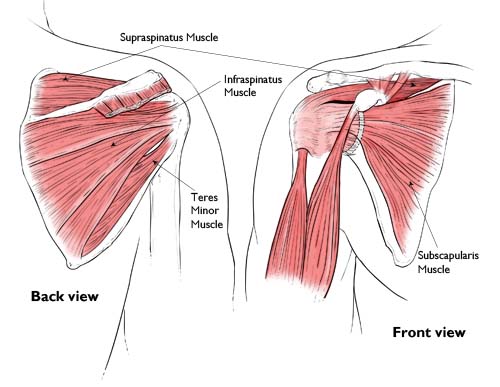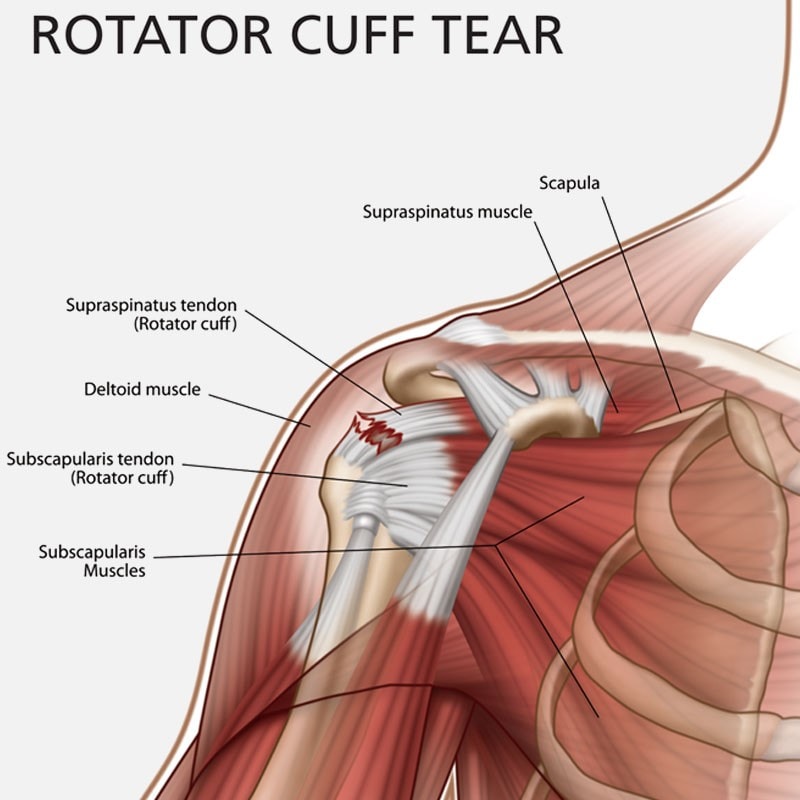What is a Rotator Cuff Tear?
Most of us will experience some shoulder joint pain or dysfunction in our lives. The shoulder joint and its associated muscular rotator cuff can be particularly vulnerable to injury due to a unique and complex movement called circumduction.
Circumduction is a complex and important functional movement that allows us to push, pull, reach, lift, and essentially do all of the physical tasks our daily life requires. (It’s interesting to note that the hip is the only other joint in our body capable of circumduction.)
One of the most common shoulder injuries is a rotator cuff tear and we are much more likely to experience one upon reaching middle age.
What is the Rotator Cuff made of?
The rotator cuff is composed of four individual muscles which blend together to form what anatomists refer to as a musculotendinous cuff. The muscles work together in order to dynamically move the arm and shoulder joint.
Often visualized as a “ball and socket” type of joint, proper coordinated stabilization must also come from the surrounding scapular stabilizers (shoulder blade muscles).
Common Causes of Rotator Cuff Tear:
The two most common causes of a tear of the cuff muscles are acute trauma, such as lifting something unexpectedly heavy overhead or cumulative injury aka “wear and tear” from repetitious movements, particularly if performed overhead. In the past, surgery was often prescribed to correct a tear, regardless of the severity, but there is mounting evidence that non-traumatic tears respond best to conservative or non-surgical care.
Treating a Rotator Cuff Tear:
Conservative care typically consists of a course of manual therapy combined with rehabilitation exercise and should follow a plan that focuses on pain/symptom relief and progresses towards correcting and strengthening the local pain-generating tissues and surrounding supportive musculature.
At Physio Logic, we divide this progression into structured phases of care incorporating specific soft tissue treatment, gentle joint mobilization, and individualized rehabilitation exercises. The end goal is the restoration of function with symptom relief as an important first step.
Correction of a rotator cuff tear with an emphasis on prevention of re-injury should include a home exercise program designed to maintain the strength and mobility of your shoulder, as well as correct poor upper body posture. Posture is the position from which we begin and end all movement.
Many progressive practitioners believe that we may be predisposing our shoulder joints and rotator cuff to additional “wear and tear” via the ubiquitous “stressed” postures of our culture (think rounded shoulders and forward carriage of your head).
It’s good news that many rotator cuff tears respond well to conservative care and that perhaps posture correction could facilitate rehabilitation as well as prevent injury in the long run.
Do you have shoulder pain? We can help you! Give us a call or reach out to us by filling out the form below and schedule your appointment today.

